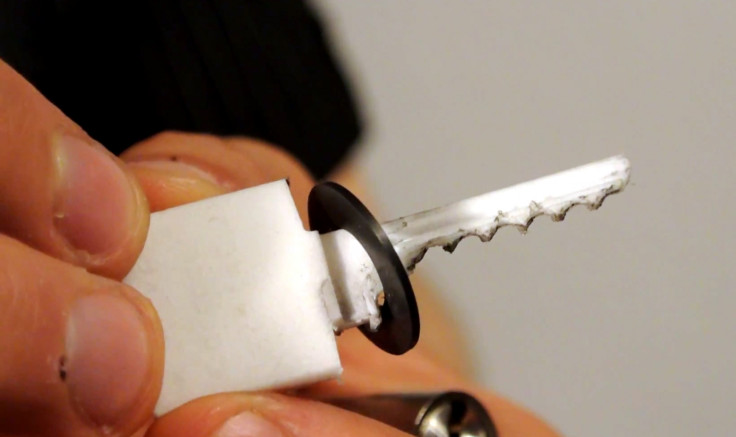Lockmakers Beware: 3D-Printed 'Bump' Skeleton Key Can Crack High Security Locks
Two lockpickers have found a way to crack high security locks using a plastic 3D-printed key

In TV shows such as Prison Break, and movies throughout history, people have escaped prisons by making a mould of the necessary key by pressing it into a bar of soap, and then filling the mould with plastic from a melted toothbrush or some other fanciful, though non-believable, material.
But what if you could actually make a skeleton key out of plastic? According to Wired, two German engineers have found a way to achieve this by using a 3D printer and specially-designed software called PhotoBump, without even having the original key.
Jos Weyers and Christian Holler, competitive lock-pickers and security consultants, have found a way to use the traditional lock-picking technique of "bumping", where key blanks are "bumped" into the lock by tapping the end of the key with a hammer.
The teeth of the key blank knocks against the pins in the lock cylinder, causing the pins to jump, and if done correctly, this can cause the lock to open.
Bumping using a 3D-printed key blank
The makers of high-security locks make sure that their key blank designs are patented, so multiple copies of these keys are expensive, and the key blanks are only available to a small group of verified customers. But Weyers and Holler have found a way around this.
A photo of the lock's pathway (called a "keyway"), the position of pins on the lock's key blank, the cut depths and angles used to duplicate keys, and other easily obtainable details about the lock, can be used to make a 3D model of the key.
The software was programmed by the lockpickers to print out a 3D model of the key blank, or if given the key's combination, an exact copy of the original key.
Once the model is 3D-printed, the "bump" key works just as well as a metal one.
Lockmakers need to improve security
"So far, I have successfully created a key blank for a protected profile and then used a regular key cutting machine to create a bump key out of it," Weyers writes in a blog post.
"The cylinder attacked here is a Zeiss IKON SK6 with a restricted profile. Note that this particular cylinder is probably not an easy bumping target anyway (it has six pins and a deep spool).
"I tried a metal bump key on that one (created from one of the existing keys) and did not succeed in bumping it with that. With the plastic bump key, I was successful multiple times."
The lockpickers will be presenting the technical process behind making the plastic bump key at LockCon 2014, an international conference about lockpicking to be held on 19 September in the Netherlands.
The pair do not intend to release PhotoBump, instead hoping their work will warn lock makers, who rely on the unusual patented shapes of keys to keep locks secure, reasoning that if crooks do not have access to a specific lock's blanks, then they cannot perform the bumping trick.
Weyers is also working with the German police in order to find out whether 3D-printed bump keys leave any forensic evidence behind when used.
© Copyright IBTimes 2025. All rights reserved.






















